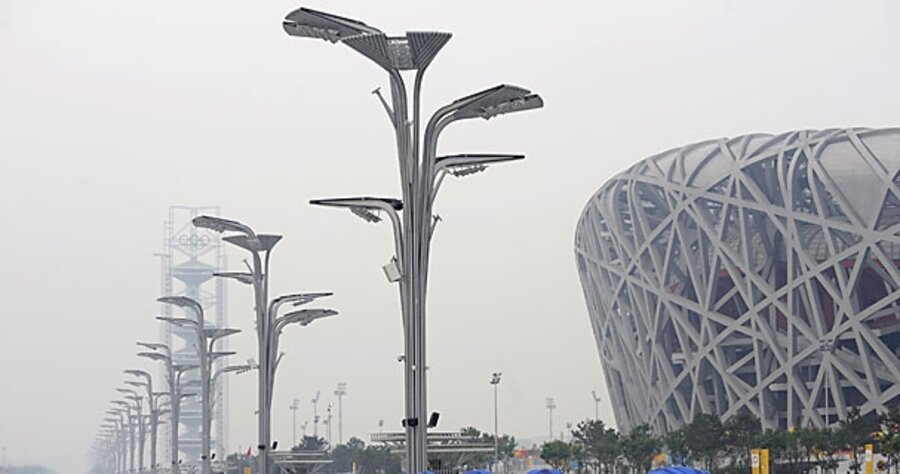What happens when you turn off Beijing's pollution?
Loading...
It's not every day that a major urban center suddenly puts the brakes on its industrial emissions. As Beijing tries to clear the air for the Olympic Games, one researcher is jumping at the chance to observe how the atmosphere is responding to what's being called the "great shutdown."
V. Ramanathan, a climate and atmospheric sciences professor at UC San Diego's Scripps Institution of Oceanography is taking advantage of this singular opportunity. He and his team are sending unmanned aerial vehicles into the pollution clouds that spread from Beijing and other Chinese cities. The flights take off from South Korea's Cheju Island, about 725 miles southeast of Beijing, and fly directly into the smog plumes.
The unmanned aircraft are equipped with micro- and nano-sensors that will gather information about the sun's energy and the interactions between various pollutants and clouds.
"Thanks to the concern of Olympic organizers, the Chinese government, and the cooperation of the Korean government, we have a huge and unprecedented opportunity to observe a large reduction in everyday emissions from a region that is very industrially active," said Mr. Ramanathan in a press release from Scripps.
China has taken drastic steps to improve Beijing's air quality for the Games, shutting down scores of factories, halting construction projects, and removing 2 million cars from the streets. Even spray-painting is banned for the duration of the Games. Overall, Chinese officials say that they have reduced industrial activity by as much as 30 percent.
According to Soon-Chang Yoon, a co-principal investigator on this project and an environmental scientist at Seoul National University in South Korea, this will be the first time that pilotless drones will be used to study air pollution in east Asia. Previously the team has conducted flights over the Indian Ocean, and they are currently using the aircraft for a nine-month survey of air pollution over southern California.
According a schedule posted on the project's website, Ramanathan's team conducted the first test flights this past weekend. The project will run until September 30.
[via Mother Jones]





